Keeping track of my (@Reejindeed ) adventures in learning folklore and mythology
Don't wanna be here? Send us removal request.
Text


Dionysus's wrath on Attika
One time,Dionysos came to Attika. He gave Ikarios a vine-cutting and taught him the art of making wine. Ikarios eagerly shared this gift with some shepherds, who, after drinking the undiluted wine, thought they had been poisoned and killed Ikarios. Later, they realized their mistake and buried him. Ikarios' daughter, Erigone, searching for him with the help of their faithful dog, Maira, found his body. In her grief, she hanged herself.
As punishment Dionysos drove Athenian women mad, causing them to hang themselves, until the shepherds were duly punished and appeasing rituals established in the god's honour.
191 notes
·
View notes
Text
On Anthesteria
Anthesteria was one of the four major Athenian festivals dedicated to Dionysôs–the son of Zevs and either Semelê, Dionê, or Selênê and the Olympian God of wine, vegetation, pleasure, festivity, and wild frenzy. Anthesteria was celebrated on the eleventh through thirteenth days of the Attikan lunar month of Anthesterion, which would be understood today as the lunar cycle spanning the late January/early February full moon. This festival celebrated the beginnings of Spring, fertility, and also gave homage to the Cult of the Dead throughout its three day span.
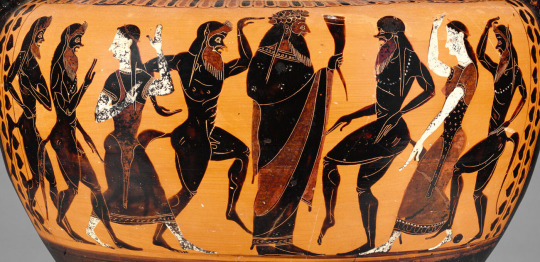
Each day of Anthesteria has a separate name with different themes of praxis. The first day of Anthesteria is referred to as Pithoigia, or literally “the Jar-Opening.” On this day, children under the age of three were adorned with wreaths made out of the first flowers of the year and the jars of wine from the year prior were opened and libations to Dionysôs were aptly performed. It was tradition for the entire household–including slaves–to join in the festivities of Anthesteria beginning on the day of Pithoigia. This is one of the biggest instances in ancient Greek culture of social order being interrupted for certain festivals. There is an alternate argument proposed by Jane Ellen Harrison that the jars being referred to during Pithoigia were not meant to be understood as wine-jars, but instead urns used in burial rites, making Pithoigia being the day of “opening the graves.” Personally, I feel that Pithoigia could be in reference to both the opening of jars and urns, considering the multitudes of use pithoi had. It would not be too off-base to make an educated assumption that the opening of wine-jars and burial urns would initiate both the festivities of Anthesteria and likewise the invitation of the dead amongst the living.
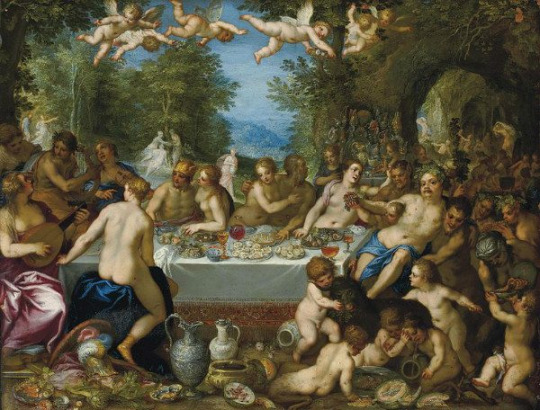
The second day of Anthesteria was referred to as Khoës, or literally “The Pouring.” The general drinking festivities of Anthesteria continued on this day, but there is also a very large implication that Khoës was a day with more of an erotic undertone. Outside of previously mentioned eroticism, festival-observers would play drinking games and pour wine onto the graves of their deceased loved ones. A very popular Anthesteria drinking game was simply gathering a group of people and seeing who was able to empty their cup of wine the quickest. Khoës appears to have been a day of friendship and connection, it would seem.
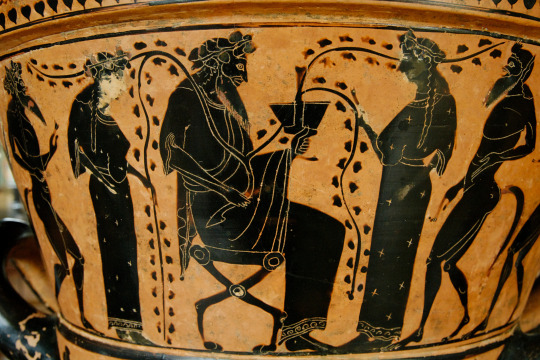
While on the topic of Khoës, I wanted to speak on an aspect that many people don’t reference when discussing the historical praxis involved in Anthesteria. This would be the divine marriage ceremony between the ritual Queen of Athens and that of Dionysôs. This particular ceremony involved an array of characters. First, we have the Archon Basileus who plays the role of Dionysôs. The Archon Basileus was the last remnant of an Athenian monarch and held a similarly high position to the Archon Eponymos and Polemarchos. The role of the Archon Basileus was basically to oversee the organization of religious festivals, ceremonies, and trials of homicide. Next we have the Basilinna, who was the wife of the Archon Basileus, The Basilinna was the ritual Queen of Athens, and her role was to be the bride of Dionysôs in the ceremony. This particular position was seen as immensely important to the well-being of the city considering this particular marriage ceremony was enacted as a method of keeping the city safe from various threats to the city. And finally we have the elected Gerarai–a group of fourteen priestesses chosen by the Archon Basileus to tend to the Basilinna and later for her to swear an oath to them prior to the procession.
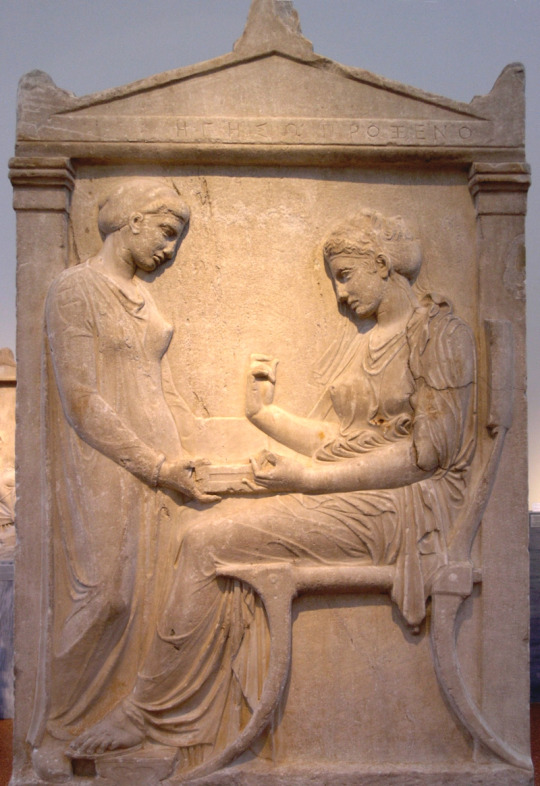
Ludwig Deubner has proposed a theoretical reconstruction of the events of this ceremony, but we must understand that the ceremony in and of itself was very secretive and wrapped in the confines of Athenian mystery rites. Deubner proposes the ceremony begins with Dionysôs (played by the Archon Basileus) being taken to the sanctuary at Limnai where he was then married to the Basilinna. After their marriage ceremony, the Basilinna would swear an oath to the Gerarai and the newly-wedded Ritual Queen of Athens was taken in procession with her Divine Husband to the Boukoleion where their marriage was consummated. It is heavily suggested that the consummation of marriage between the Basilinna and Dionysôs was erotic in origin, and could have even involved ritual intercourse within the inner-chamber of the sanctuary. Walter Burkert, a German scholar of Greek mythology and cult, has speculated that this ceremonial union is a recreation of the yielding of Ariadne to Dionysôs by Theseus during their escape from Minoan Crete.

The last day of Anthesteria is called Khytroi, or “The Pots.” This day was the festival for the Cult of the Dead. On this day, there were to be no offerings for any non-chthonic Gods, and theaters were closed from performing any shows. Citizens of Athens would prepare separate food to be given as an offering to both Hermês Psykhopompos (in his aspect of Chthonic Psychopomp) and to the dead, which no mortal was supposed to taste. After these offerings were given the dead were begged to leave the city, with the proverb “Out of doors, Keres! It is no longer Anthesteria!” After the banishment of the spirits, the Athenians would continue their general Anthesteria festivities of drinking and merriment.
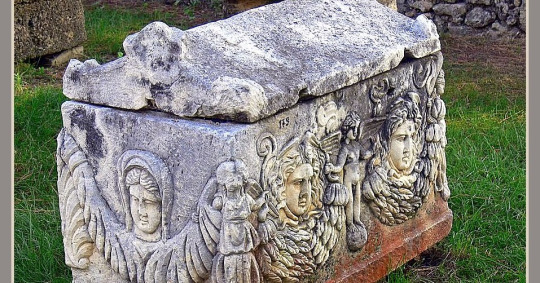
I want to note that both Pithoigia and Khoës, while accepted as the more light-hearted days of Anthesteria, were known to be both “unlucky,” and “defiled.” While spirits of the dead were invited to festivities, there were also precautions taken to keep them from coming too close. Temples were roped off, pitch was smeared on doors of homes, and people chewed leaves of hawthorn and buckthorn.
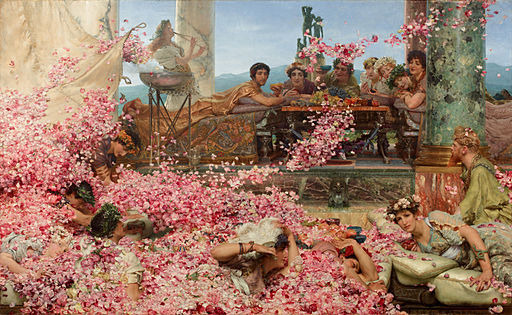
I recognize that modern celebration of Anthesteria cannot be as intricate as its ancient Athenian counterpart, but there are ways now that it can still be celebrated. You can celebrate through ancestral veneration and opening up new bottles of wine and performing libations to Dionysôs. If you are unable to drink wine, non-alcoholic drinks work just as well. You could also leave offerings and read the Orphic and Homeric Hymns to Dionysôs and maybe even read some plays about him. It is simply a time to reflect on deceased loved ones, the oncoming of spring, and the celebration of Dionysôs.
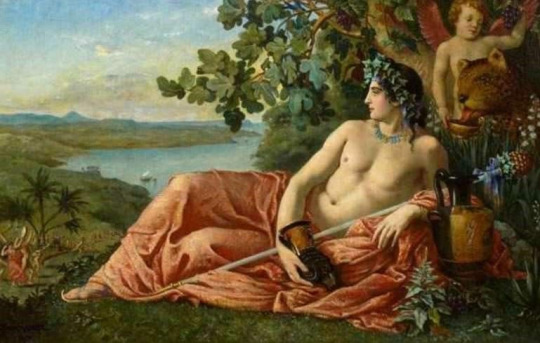
Below is a link to a web-published version of this essay that includes my sources in footnotes. Unfortunately, it has no photos because I am boring.
415 notes
·
View notes
Text
Does anyone have an Emotional Support Character that really only exists in glimpses of stories that for some reason you're just absolutely fascinated by?
Mine is Aed. Specifically Aed sleeping with Corchenn's wife, Aed.
Mostly because Aed has become my litmus test for whether or not I can get accurate information about Irish lore. I have seen him described as a "fire-eyed god of the underworld" and I simply do not understand how we got from "Guy who slept with Corchenn's Wife" to that.
Personally I'm rooting for Aed. I sincerely hope he's enjoying his new life as a fire-eyed god of the underworld.
#irish mythology#irish lore#Aed#his existence makes me laugh I absolutely adore him for zero logical reason#I Just Think He's Neat
5 notes
·
View notes
Text

Two very different vibes for two different wingheads
59 notes
·
View notes
Text


Some Hypnos sketches…
53 notes
·
View notes
Text

Old meme. But that was my first thought after reading "The cattle raid of Regamain" and "The death of Cu Chulainn"
63 notes
·
View notes
Text
What did Hypnos get for his birthday?
A new pair of earwings

0 notes
Text

It took me a long time to get the momentum going for this work but I finally finished it.
I created this as a devotional piece for Brigid, in thanks for her keeping the fire of creativity alive in me. Here she is depicted as a more modern incarnation an artist enjoying solitude among nature.
I hope this brings joy to other devotees and fans of celtic/irish folklore 💙💙💙
31 notes
·
View notes
Text
More Tuatha De Danann design ideas. I suppose I should do full height for each of them like I did with Dagda and Morrigan

I couldn't decide what would be better for Lugh, with or without a beard, so here is the version with a beard. I wanted to make him similar to Cu Chulainn in a way. After all, he is Lugh's son
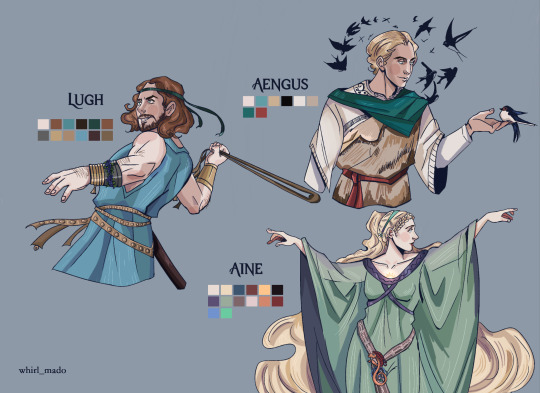
139 notes
·
View notes
Text
Lately things have been particularly hectic (like starting a new job very suddenly hectic and having to rush out tomorrow to get a background check done) and every time I start getting really overwhelmed, this mental image of Hermes balancing on one of those athletic balance trainer things keeps popping up in my brain, like a reminder to chill out.

Trying to learn how to go with the flow is tough for me. It’s something I feel I used to be better at when I was younger, and am once again learning how to do now that I’m actually medicated for the anxiety that kept me from doing so much in the first place. It still feels like this most days.

10 notes
·
View notes
Text

There was something really captivating about Alcibiades when i first learned about him reading about the Peloponnese war. On a first glance it'll sound even funny how many times he would switch sides. Which resulted in many enemies and almost zero trust from his peers.
Personally i was questioning often the reasons why he would do it and then in the symposium doing such profound speeches about love, then his relationship with Pericles, Socrates and his close people in general.
From even the little information about him picture very much a very complex person who lived his life the the fullest until the end and most certainly left a mark many unfortunately now ignore.
436 notes
·
View notes
Text

Dionysos, the seen and the unseen 🍇🍷
✧ please do not repost to other sites~
1K notes
·
View notes
Text
I'm in love with Celtic Mythology, especially Irish, so I wanted to draw something. I decided to start from "The Wooing of Emer" and these are my first sketches. They will be revised and expanded later (or maybe not).

The first artwork depicts young Cu Chulainn in two different outfits. The second one depicts him in the attire he wore when he went to Emer. I tried to match the description in the text.

The second artwork shows an adult Cu Chulainn; this version won't be used in the illustration unless I decide to illustrate the entire saga in the future.

The third artwork is a small portrait of the young Emer.

The fourth depicts Macha Mong Ruad or Macha the Red Haired. She's a minor character in "The Wooing of Emer", appearing only in Cu Chulainn's narrative, but I really liked her story.
67 notes
·
View notes
Text

How embarrassing…
Do you think they shop at the same store?
200 notes
·
View notes
Text

A little Dionysus doodle
1K notes
·
View notes
Text
I've been taking care of our family's grapevine and last year even managed to try some grapes before the birds got to them. We have it mostly for the leaves rather than the grapes, so I wasn't even sure it would produce edible grapes. These vines has been in my family since before I was born and has been a huge part of my childhood, so it was special to actually eat grapes from the vine in our own backyard.
I've been doing lots of drawings of him recently. Maybe we'll even have more grapes next year.
I don't know if any of y'all feel this too but every time I sit down to draw Dionysus, drawing clothes on him feels. Wrong.
7 notes
·
View notes
